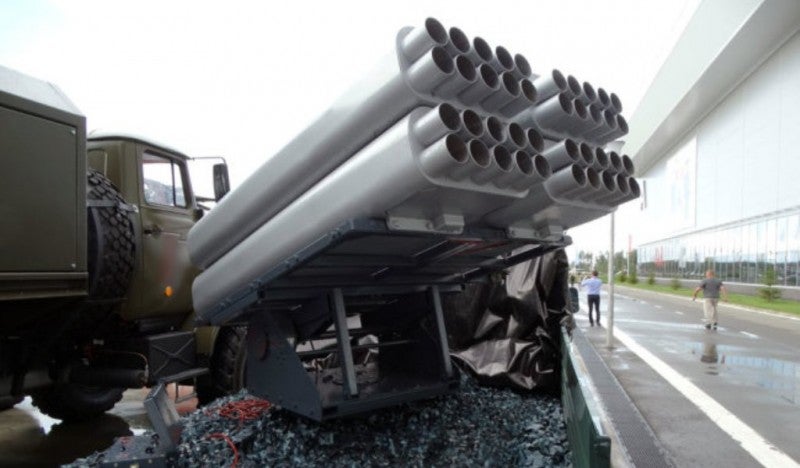Russia Turns to Smaller Rocket Artillery for Specialist Light Roles
Traditionally, multiple launch rocket systems (MLRS) used by large conventional militaries have been large. ‘Bigger is better’ appears to have been the constant mantra with these systems, with the 122mm BM-21 “Grad” rocket launcher being one of the smallest caliber MLRS in service today.
However, experience fighting unconventional militaries in Iraq and Afghanistan have sparked interest in smaller launchers again. In those conflicts, irregular militaries have deployed smaller MLRS to great effect. The Chinese Type 63, a small 12-barrel towed launcher the size of a small generator that fires 107mm rockets is the most notorious of these. Aerial rockets pods like the Soviet/Russian S-5 57mm and S-8 80mm have also been adapted for use as improvised ground-based MLRS.
As a result Russia is now looking to adopt a new small caliber MLRS. While “improvised” solutions like attaching S-5 and S-8 pods onto BTR turrets were created during the Soviet invasion of Afghanistan, none of these mounts were truly standardized, nor meant for proper artillery usage.
The new system is described as “roboticized”, which probably means that it includes motorized traverse and elevation mechanisms which are connected to an artillery computer for fast gunlaying. The rockets used are said to be the same as those used in S-5 and S-8 aerial rocket pods, which saves development time and eases logistics. This also gives the new MLRS a fairly wide variety of ammunition, as many different types of S-5 and S-8 rockets have already been developed, including anti-armor and illumination rounds.
Range for the new system is predictably small, with maximum range stated to be around two kilometers. This is shorter than even 82mm mortars, so it’s likely that this new weapon will have to be stationed very close to the front. The launcher is capable of being operated remotely to avoid the risk of suffering casualties by counter-battery fire.
The launcher is said to be for light troops such as special forces, airborne and marine troops. These troops could employ the light MLRS as a faster but more ammunition-hungry mortar in urban combat, instantly saturating points of resistance with rapid fire before enemies can take cover.
Oddly, the MLRS is also described as being capable against air targets up to an altitude of 1 kilometer. Unless the rockets are fitted with proximity fuses, such employment is unlikely to yield effective results.

